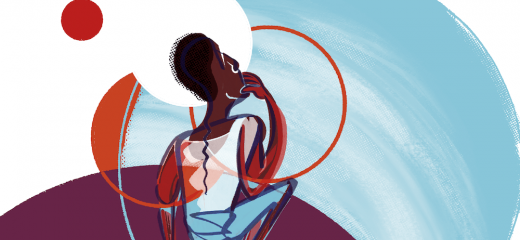
Decolonizing Dance Writing: Body Stories and the Bedrock of Dreams
by Gregory King, Leonard Perez, Cynthia Williams, Darcy Grabenstein, Maurya Kerr, Michael Foley
Dance has the power to allow one to surrender to the embodiment of resistance, making it radically political. But how is the corporeality of our body politics activated and does the tone of the discourse shift when a Black, queer, or disabled voice is centered? Is the performance of body politics different for transnational individuals and can marginalized bodies find freedom from the burden of colonialism simply by being present? These questions were ruminated on in the virtual Dance Criticism and Aesthetics course offered by the 92nd Y, and parsed out by writers Leonard Perez, Cynthia Williams, Darcy Grabenstein, Maurya Kerr, and Michael Foley.
Read part one of this series, “Decolonizing Dance Writing: Who is Writing for?,” here.
Leonard Perez
I was born and raised in Santo Domingo, Dominican Republic and I am aware that the reason I speak Spanish is because the island was colonized by Spain. In full awareness that I am writing in Spanish, the language of the oppressor in my home country, this is an opportunity for me and an important community of Spanish-speaking dance lovers in the U.S. to see more of themselves represented in mainstream dance writing.
Ya sabemos que en el mundo en el que vivimos el acceso a recursos depende de nuestro estatus social, raza, grupo étnico y orientación sexual. Es imposible negar que nuestras identidades tienen mucho que decir y afectan nuestro diario vivir en este mundo donde lamentablemente el racismo y la homofobia son partes de nuestro diario vivir
Mi cuerpo es un instrumento dancístico con el cual, desde muy joven, expreso libremente mis emociones. A la misma vez entiendo que al ser negro, Latino y queer cuando bailo traigo conmigo estas partes de mi identidad. Esto representa mucho y tiene mucho que decir en un país como los Estados Unidos donde mi identidad como hombre negro, Latino y queer no son sinónimos de igualdad y justicia. Todo lo contrario son sinónimo de opresión. Por esa razón es que yo como bailarín, cada vez que bailo tengo la oportunidad de usar mi identidad como un arma política con la que puedo ayudar a desmantelar este sistema de opresión. He aprendido que mi voz es importante y necesaria para poder combatir este sistema que me consume la vida cada vez que me recuerda que si no soy hombre, blanco y heterosexual mi voz no importa o no vale. Ser una minoría en este país implica tener menos poder e igualdad. Esta falta de igualdad es un peso muy grande de llevar a diario pero entiendo que es importante usar mi voz en contra de este sistema porque sino lo hago, yo y mi comunidad corremos el peligro de seguir siendo oprimidos y todavía peor permitir que este sistema borre nuestra cultura e identidad como en un pasado lo intento hacer.
Cuando bailo traigo conmigo al escenario todas mis vivencias. Vivencias que han sido marcadas por como este sistema opresivo dice que merezco ser tratado por el hecho de ser negro, Latino y queer. Para mí es inevitable danzar y no traer conmigo quien soy, cómo soy y todo lo que he vivido. Lo bueno y lo no tan bueno. Mi negritud, sexualidad y latinidad son partes de mi que amo y respeto.
Cynthia Williams
If my racial, gendered, moving body is the lens through which I create, experience, and teach dance, how do I understand my relationship to “Dance” as a political expression?
I have unearned privilege as a white person. I have been inculcated in the insidious, pervasive, and unmarked patterns of white supremacy and anti-Blackness. At 5’2 and 125 pounds with thinning blonde hair and glasses, my white, female, mid-sixties body is not generally viewed as threatening; simultaneously, my identity as a dancer is not immediately obvious. I no longer fit all the stereotypes of dancer as thin, petite, young, white, and female. Dance as a profession values the unmarked categories of whiteness, and those bodies without visible physical disabilities. My aging, white, female dancer’s body is not particularly valued in academe, a place where Dance as a subject of study itself is often disparaged. Academe valorizes a body/mind split, championing the life of the mind over the lived experience of the body.
The politics of dance are fraught with inequities and reflect the larger social constructs of race, gender, class and ability in intersecting ways. Dance is often an expression of power, decorum, and appropriateness. Many choreographers and performers stake a radical presence on stage in works that manifest their political messages and identity. Is political dance reserved for the concert stage, performed by rebellious choreographers and dancers? Is there room in this struggle for this body? I work to decolonize dance through my teaching practices, my instigation of curricular changes in my department, and my commitment to presenting and supporting artist-activists who are choreographers and dancers of color, disability justice activists, and artists whose voices are traditionally silenced.
The personal is political. My body politics are performed in the studio, the lecture hall, in faculty meetings, downtown, and on the concert stage.
Darcy Grabenstein*
Can we separate politics and art? I think the two are inextricably intertwined. Dance, like any art form, often provides invaluable commentary on current society. Should we separate politics and art? I think not.
Can we separate our own politics from art? Again, I think they are inextricably intertwined.
I am an only child. I am a white Jewish, middle-class woman from the South, who has witnessed more racial than religious prejudice. I attended a predominantly Black (60 percent) high school. My father died when I was 18. I got a college degree, married, had two sons, divorced, and remarried. I’ve also had an abortion. I am often ashamed of my Southern heritage. My “Jewish guilt” manifests as being inwardly apologetic for my white privilege.
The Wikipedia definition of radical politics is “intent to transform the fundamental principles of a society or political system.” I would argue that, if those principles are flawed or no longer being upheld, efforts to transform them are not radical but rational. I’m not talking Democrat or Republican, conservative or liberal, capitalist or communist. Beyond labels, politics are about power relations, such as the distribution of resources or status. Our individual politics, wherever they fall on the spectrum, inherently impact every aspect of our being, even if we are unawares. As a writer, every word, every adjective I choose is predicated on my life experience. I cannot compartmentalize my politics, relegating it to the back burner when I review a dance performance. I must acknowledge this and proceed (with caution).
Even the politically charged reactions of other audience members may, unbeknownst to me, sway my own perceptions. However, it is through the lens of my own personal politics that I view—and critique—a performance. And those who read my review will do so through their own politically tinted lens.
Maurya Kerr
Within a racialized paradigm white bodies are endowed with power. My light-skinned Blackness is generally palatable to Amerikkka, while darker-hued Black bodies are feared and subjugated. The racial politics of a space are generally apparent by the presence or absence of people of color.
Every body is political.
Every body inherently holds certain positions of power within its relative societal structure.
Every body is indelibly inscribed by the malignancy of white supremacy.
When I watch, for example, a performance of the San Francisco Ballet, I am generally surrounded by white people watching other white people dance. Such spaces enable violence because white-majority spaces relentlessly center whiteness and push ‘otherness’ to the margins. (Building on the framework of bell hooks and many others, I define ‘otherness’ as beings who exist outside the cis-normative heteronormative imperialist ableist white supremacist capitalist patriarchy.) What this white-centering does is dehumanize ‘others,’ making them erasable without pause and killable without conscience. Whiteness is not the neutrality it claims—it is oppressive. (And a quick note to everyone who contributed to fulfilling SFB’s five million dollar Critical Relief Fund goal: congratulations—you have actively bankrolled the continuance of an unrepentant, racist institution.)
As a black woman dancer, I choose (recognizing my privilege in that choice) to manifest my politics every time I dance and choreograph. My hope is that the way I move through the world, how I teach, how I write, how I love, how I imagine and reimagine… are all expressions of a generous radicality that can help empower a world where Black and brown lives are centered, where Black and brown dreams are bedrock.
Survival essentials (and reminders) for every ‘othered’ body (but particularly for Black and brown folks) include acknowledging that our dancing bodies can disrupt cultural inscription and enter a liminality that allows for non-binary-ism, nuance, and utopic potential. Our dancing bodies can rage, surrender, love, and reveal themselves in ways that are prohibited and deadly within our anti-Black and -brown nation. Our dancing bodies can reclaim what has been stolen from them. And our dancing bodies can be suffused in wonderment, even if just for a moment.
Michael Foley
The hyper-political performance culture marked by the AIDS crisis of the mid-1980’s, helmed by artists like David Wojnarowicz and Tim Miller, centered grief/loss, homophobia, and rage. We are currently experiencing another tectonic shift in the American consciousness about systematic racism which has prompted dancemakers to question the very foundational materials with which our dances are being built. Dancemakers like myself feel that shift as a necessary and powerful alteration in how we need to compose our dances and the body stories we are trying to tell within them.
This is beyond making a dance about racism, sexism and homophobia: it is about confronting formal choreographic structures which were built within a system of white supremacy (classical ballet and mainstream modern dance) and is inherently centered on whiteness. By examining these kinds of structures, we destabilize notions and expectations of outcome, but it also opens us up to possibilities that we may never have considered.
As feminist, anti-racist, queer, egalitarian and “woke” as I think I am, my political self has not been infused to a substantial degree into the subject matter of my dances or through ethical work practices which destabilize notions of choreographic power in the studio. A choreographer needs to allow for other voices and bodies to engage in the collaborative process as opposed to dictating the room. I have worked with a range of bodies (in all their glorious differences and capabilities), but I am trapped by dogmatic choreographic forms, which have rarely allowed me to explore the range of my personal politics as someone who values listening, healing, activism, confrontation in situations of inequality, and has a deep mistrust of institutional structures of power.
It’s not my politics that need to change; it’s my work.
*Darcy Grabenstein is a writer for thINKingDANCE.
By Gregory King
August 21, 2020

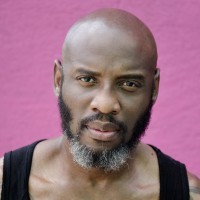
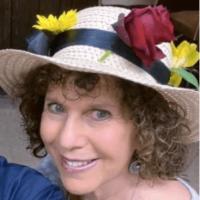

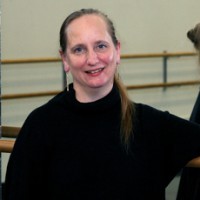
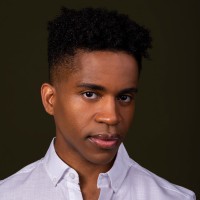
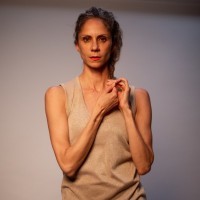
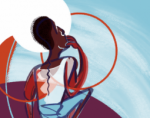
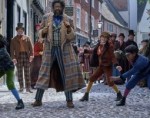
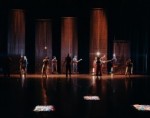

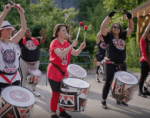
.png)
.png)


